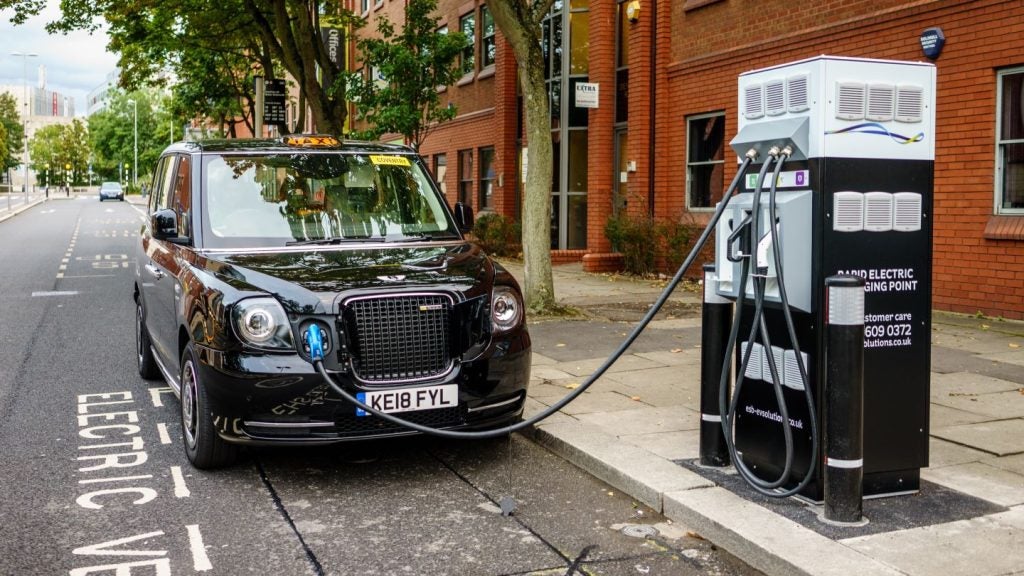Assets’ residual values are always on the minds of lessors, and economic shocks, changes in government policy, and even growth in far-off economies may all play roles in their calculation. Saad Ahmed speaks to key industry figures to find out more about values and how they may change in the near future.
In the asset finance industry, no lessor can craft an agreement without awareness of residual values.
“If you are a finance lessor, the residual value is a very large component of the valuation of the cost,” Richard Parkin, associate director, strategy group, advisory at Grant Thornton and former head of valuations at EuroTaxGlass’s, tells Leasing Life.
The future worth of an asset once it has exceeded its lease term, the residual value is in an important part of the lease term calculation. As some lessors are directly involved in the secondary market, the expected future values of assets offered are key considerations when creating lease agreements.
A variety of factors can influence residual values and their calculation. The risk of actual residual values differing from initial projections is real, and may even cause considerable financial losses to the original lessors.
Following the global financial crisis, residual values on virtually all assets took a pummelling. According to auction houses Leasing Life spoke to in April 2009, residual values had fallen across the board over the preceding 18 months, with reported drops of up to 30%. Eight years on, Leasing Life speaks to lessors and an auction house, to determine what impacts residual values, and whether the industry is adequately pricing risks such as Brexit into lease agreements.
“The largest fleets tend to have quite detailed models that take in all sorts of statistical correlations with GDP, fuel price and others, that they apply to get a view,” Parkin says.
How well do you really know your competitors?
Access the most comprehensive Company Profiles on the market, powered by GlobalData. Save hours of research. Gain competitive edge.

Thank you!
Your download email will arrive shortly
Not ready to buy yet? Download a free sample
We are confident about the unique quality of our Company Profiles. However, we want you to make the most beneficial decision for your business, so we offer a free sample that you can download by submitting the below form
By GlobalDataFocusing on fleet lessors, he says price inflation on new vehicles is one of the dominant factors affecting the calculation of residual values.
“In terms of residual values, the main factors in play are new price inflation, which is partly driven by OEMs, but also by foreign exchange, typically with the euro,” Parkin explains.
In the automotive space, where international trade makes up the majority of the market, fluctuating exchange rates may have a large impact on vehicle prices.
“With cars, for example, we import 80% of what we buy and export 80% of what we make,” Parkin says, adding that the fall in the value of the pound following last summer’s Brexit referendum – while large – had not yet had a significant effect on residual values. Parkin says this is a result of businesses hedging against currency movements.
“I suspect residual values would be supported in the current climate,” he adds. “While the exchange rate crashed last year, a lot of manufacturers were working off hedged rates for all of last year, and into this year’s registration plate.”
Carlos Montero, chief commercial officer at FleetEurope, tells Leasing Life: “Residual values can be the biggest cost to fleets, with some vehicles depreciating quicker than others, depending on what they are and how many of them are in the marketplace.”
Montero says that, although other factors influenced residual values, the dynamics of the used market were the most influential. “Vehicle specifications, and the market auction prices and historical data that influences where those prices are set, ultimately come down to what the used car market wants,” he says. “That is the most influential factor – how the used car buyers will view any vehicle going through auction in terms of what they are prepared to pay.”
The fuel factor
In terms of asset class, diesel vehicles have seen movements in residual values.
This year the UK government unveiled plans to reduce diesel emissions. Measures such as the rise in Vehicle Excise Duty (VED) on vehicles not meeting emissions standards would make earlier models of light commercial vehicle (LCV) and passenger car more expensive to run.
Rather than cause downward pressure, a last-minute surge in sales just before the VED increase came into effect led to a rise in the value of diesels on the secondary market, as they were registered before the change.
“There was actually a scramble and a little uplift [in diesel sales] just before the change so people could buy certain types of vehicle,” he says. “If you are the right side of the change, sometimes that can be beneficial, because the tax is always going to be the same, and people bought those vehicles for a reason.”
Diesel vehicles currently on the secondary market have their VED fixed at the old rate, and so may become more valuable for those seeking diesel vehicles.
Montero says electric vehicles (EVs) have seen a rise in residual values, as a result of greater abundance and availability on the secondary market. “Residual values on electric vehicles are strengthening, and will continue to strengthen as more people continue to become more educated in the way they view electric vehicles and how they perform,” he explains.
Hybrids, rather than suffering from EVs entering the secondary market, have actually benefited. Providing a link to full electric vehicles, hybrids have successfully hitched a ride on the EV wave, and residual values are rising as a result.
“We have seen registrations of [plug-in petrol-electric hybrids] go through the roof, percentage wise,” Montero says. “Hybrids have strengthened as well, in line with electric vehicles, if anything just as a stepping stone to an electric vehicle.”
Taking residual values into account has a necessary impact on how lessors conduct their business. On the simplest level, expected residual values will help determine lease payments and terms of a deal. Leasing removes the direct cost of residual values from lessees; however, lessors remain exposed, and must rely on the secondary market to offload them.
In the technology sector, with high turnover and complex secondary markets, the risk of obsolescence makes this a necessity. In the technology sector, with high turnover and complex secondary markets, the risk of obsolescence makes this a necessity. “With IT devices, the lessee starts with a plan to refresh devices in 2, 3 or 4 years’ time, which will typically be the primary lease period, and then they have the freedom to take a just in time decision to return, refresh or retain the devices,” says Carmen Ene, chief executive officer of 3Step IT.
Ene says that lease terms and the level of payments may depend on anticipated residual values. “The residual value we obtain helps make the primary lease affordable,” she tells Leasing Life, “Our contract terms are open and clear so the client knows what an extension will cost. Clearly the changed RV for devices that are used for longer is built into that pricing, which is stated up front.”
Many lessors and intermediaries bear the cost of residual values, and are responsible for disposal, resale, and redeployment. “We take back IT devices at the end of the lease, and we remanufacture and resell over 95% of them,” Ene adds, “We have been consistently investing in a circular economy business model and now we have 5 refurbishing plants around the world.”
Ene tells Leasing Life that 3StepIT is able to manage old assets and their second lives. 3StepIT brings technology up to standard, and redeploys these assets through the secondary market. Ene says that 3StepIT’s focus on the circular economy brings environmental benefits.
“As circular economy exponents, 3 Step IT makes a business out of providing assets for the secondary market. In turn the first users of the devices benefit, as the value we recover makes the planned refresh of devices affordable; it also reduces their environmental impact when their IT is more sustainable,” she says.
Other assets outside the technology sector may also find a second life in markets further afield. Parkin notes that HGVs are often redeployed in Africa and Asia once their initial cycle has come to an end.
“They’re sold, after three years, because their export markets tend to be in southern Africa and the Indian subcontinent; they will then serve some years out in those markets,” he says, adding that HGVs made for the UK market often go to other countries with right-hand drives.
Across all asset classes, increased specialisation and technological features may actually harm an asset’s chances on the secondary market. In other markets, technology needs may not be as high, and knowledge about these features may not be as widespread. As a consequence, they are less desirable than on their initial cycle, and may suffer when compared to other, simpler and more familiar models of asset. Lessors may take this into consideration, and charge higher lease payments for more bespoke items, in order to cushion themselves from such financial fallout in the future.
Drivers of demand
While residual values involve many calculations, there is no guarantee that these numbers will hold true in the future. Following the global financial crisis in 2007, residual values crashed across a variety of asset classes. As late as 2009, residual values continued to fall across the board, and lessors felt the impact.
Parkin tells Leasing Life that residual values on vehicles collapsed due to oversupply. Fewer new cars were being sold, and they essentially went directly to the secondary market. The result was a price collapse.
“After the recession in 2009, we saw some very odd behaviour of residuals,” he says. “They cratered in 2009 because people just stopped buying new, and there were all these new vehicles still being churned out.”
In the case of vehicles, the residual values of plug-in hybrids may fall in the coming years. “There probably need to be many more EV registrations to have a greater effect on the residual value of [hybrids],” says Montero, noting that EVs have only recently come onto the secondary market.
As knowledge and accessibility increase, EVs will continue their upward trend. According to the Society of Motor Manufacturers and Traders alternative-fuelled vehicles reached 4% of the market in 2016, spurred by the rise of EVs.
Montero argues that hybrid sales remain popular, due in part to the decline of diesel. “There is still a demand for those types of vehicle, and especially driven through the fleet market, but also through those that are looking at alternatives to diesel if need be,” he says. He points to the success of the Mitsubishi Outlander as an example. He claims, however, that residual values of more established hybrids may fall due to competition.
“The brands that are more established, such as the Outlander, may see some residual values dip because they have taken a bit of a head in the market at the moment,” he explains.
In a few years the effect of a glut of hybrids in the secondary market, faced with a greater number of higher-range new EVs, may result in a lessening of the appeal of hybrids, depressing their values.
Parkin does not expect London’s toxicity charge for diesel vehicles to have a significant effect effect on the residual values of diesel LCVs. “The change is not expected to happen until 2019,” he says.
“My experience of the automotive market is it tends to react at the last minute. It’s really not going to apply to a bunch of people; it is, relatively speaking, a small area.”
Parkin tells Leasing Life that the Brexit vote, rather than depress residual values, led to price inflation.
“The lower exchange rate caused vehicle price inflation,” he says, explaining that the collapse in the value of sterling made vehicles from the continent more expensive, driving purchases towards the secondary market.
“If something now costs 20% more new, then people will stop buying new and buying nearly-news,” he says. “It shifts demand down. The effect is to inflate residual values down the curve.”
Economic uncertainty is a fact of business for lessors; however, some in the industry are concerned that potential shocks are not being factored into costs and modes of operation.
At Leasing Life’s inaugural Chief Executives’ Lending Forum in March 2017, Paul Jennings, managing director at JCB Finance, warned that the industry risks an erosion of skills as reliance on algorithms grows.
He also questioned whether the industry is accounting for the possible impact of Brexit. As the last recession caused considerable financial loss to many lessors as residual values collapsed, a Brexit-induced economic downturn may have a similar effect.
“Brexit is really going to be there in the middle of agreements that we are writing today,” Jennings told the forum. “Are we really pricing for that?”







